
Albrecht Dürer, sometimes spelled in English as Durer, was a German painter, printmaker, and theorist of the German Renaissance. Born in Nuremberg, Dürer established his reputation and influence across Europe in his twenties due to his high-quality woodcut prints. He was in contact with the major Italian artists of his time, including Raphael, Giovanni Bellini, and Leonardo da Vinci, and from 1512 was patronized by Emperor Maximilian I.
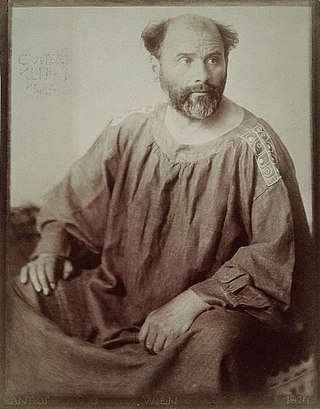
Gustav Klimt was an Austrian symbolist painter and one of the most prominent members of the Vienna Secession movement. Klimt is noted for his paintings, murals, sketches, and other objets d'art. Klimt's primary subject was the female body, and his works are marked by a frank eroticism. Amongst his figurative works, which include allegories and portraits, he painted landscapes. Among the artists of the Vienna Secession, Klimt was the most influenced by Japanese art and its methods.

The Belvedere is a historic building complex in Vienna, Austria, consisting of two Baroque palaces, the Orangery, and the Palace Stables. The buildings are set in a Baroque park landscape in the third district of the city, on the south-eastern edge of its centre. It houses the Belvedere museum. The grounds are set on a gentle gradient and include decorative tiered fountains and cascades, Baroque sculptures, and majestic wrought iron gates. The Baroque palace complex was built as a summer residence for Prince Eugene of Savoy.

The Kunsthistorisches Museum is an art museum in Vienna, Austria. Housed in its festive palatial building on the Vienna Ring Road, it is crowned with an octagonal dome. The term Kunsthistorisches Museum applies to both the institution and the main building. It is the largest art museum in the country and one of the most important museums worldwide.
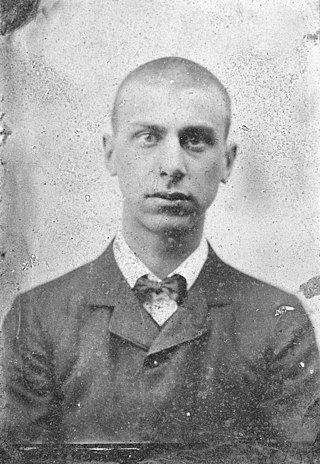
Richard Gerstl was an Austrian painter and draughtsman known for his expressive psychologically insightful portraits, his lack of critical acclaim during his lifetime, and his affair with the wife of Arnold Schoenberg, which led to his suicide.

The German Renaissance, part of the Northern Renaissance, was a cultural and artistic movement that spread among German thinkers in the 15th and 16th centuries, which developed from the Italian Renaissance. Many areas of the arts and sciences were influenced, notably by the spread of Renaissance humanism to the various German states and principalities. There were many advances made in the fields of architecture, the arts, and the sciences. Germany produced two developments that were to dominate the 16th century all over Europe: printing and the Protestant Reformation.

The Österreichische Galerie Belvedere is a museum housed in the Belvedere palace, in Vienna, Austria.
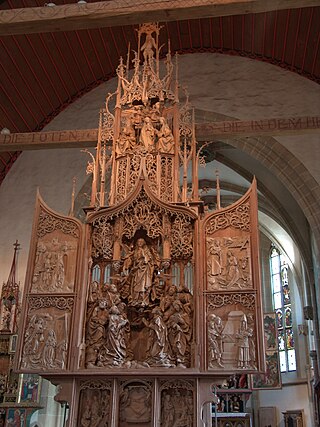
German art has a long and distinguished tradition in the visual arts, from the earliest known work of figurative art to its current output of contemporary art.
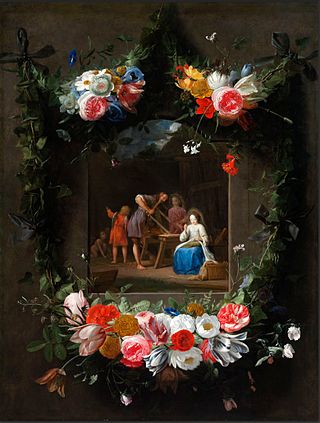
Nikolaas van Hoy, known in Austria as Nikolaus van Hoy was a Flemish Baroque painter, draughtsman and etcher.

Anton Romako was an Austrian painter.
Franz Sedlacek was an Austrian painter who belonged to the tradition known as "New Objectivity", an artistic movement similar to Magical Realism. At the end of the Second World War he "disappeared" as a soldier of the Wehrmacht near Toruń, Poland. He was declared missing on February 1, 1945 and pronounced dead in 1972.

Franz Eybl was an Austrian painter.

Joseph Willibrord Mähler was a German painter. He was born in Koblenz-Ehrenbreitstein, the son of Franz Josef Mähler and Anna Johanna, née Vacano. He first served an apprenticeship in Dresden with Anton Graff to become a painter and later on, he continued with his studies at the Academy of Fine Arts Vienna. Mähler then decided to start a civil career, and he became an officer of the Secret Service Geheime Kabinettskanzlei in Vienna, while painting in his spare time.
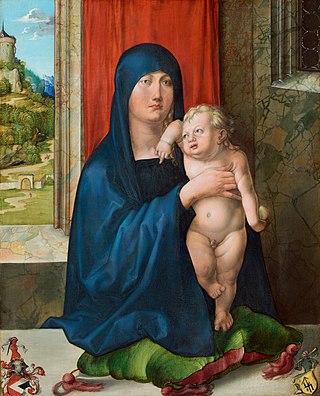
The Haller Madonna is an oil painting by Albrecht Dürer, dating to between 1496 and 1499. It is now in the National Gallery of Art, Washington, DC. The reverse also contains a full Dürer painting, entitled Lot and His Daughters.

Anton Emanuel Peschka was an Austrian painter.
Hans Tietze was an Austrian art historian and member of the Vienna School of Art History.
Arpad Weixlgärtner was an Austrian art historian.

Robert Scheffer was an Austrian painter. He specialized in landscapes, genre scenes and portraits. He was also an art collector and operated a private art school.

Eduard Swoboda was an Austrian portrait, history and genre painter. His younger brother, Rudolf, was a landscape and animal painter.

Wilhelm Legler also Guglielmo Legler was a painter from Pisino, Istria.
















